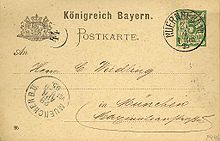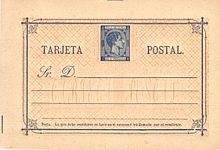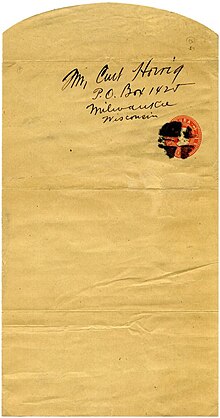EX-SLAVE MARY FIELDS FELT AT HOME IN MONTANA, WHETHER WORKING IN A CONVENT OR MANAGING A MAIL ROUTE.A Black gun-totin’ female in the American wild west. She was six feet tall; heavy; tough; short-tempered; two-fisted; powerful; and packed a pair of six-shooters and an eight or ten-gauge shotgun. A legend in her own time, she was also known as STAGECOACH MARY.Mary Fields was born as a slave in Tennessee during the administration of Andrew Jackson — a feisty sort with whom she shared driving ambition, audacity, and a penchant for physical altercation on a regular basis. She smoked rather bad homemade cigars.Well after the Civil War loosened things up, as a free woman in 1884, having made her way to Cascade County (west central Montana) in search of improved sustenance and adventure, she took a job with the Ursuline nuns at their mission in the city of Cascade — such as it was. (Cascade that is, not the job, although it was not much to speak of either.) Called St. Peter Mission, the nuns’ simple frontier facility was relatively well funded, if remote, and the nuns did a thriving business converting heathen savages, and other disgusting customers, to the true path of salvation — although not salvation from the white men.
Anyway, Mary was hired to do ‘heavy work’ and to haul freight and supplies to keep the nuns’ operation functional and well fed. She chopped wood, did stone work and rough carpentry, dug certain necessary holes, and when reserves were low she did one of her customary supply runs to the train stop, or even to Great Falls, or the city of Helena when special needs arose.
On such a night run (it wasn’t all that far, but it was cooler at night), Mary’s wagon was attacked by wolves (maybe they wanted some of the dried beans or nun suits on board). The terrified horses bolted uncontrollably and overturned the wagon, thereby unceremoniously dumping Mary and all her supplies onto the dark prairie.
The more doubtful part of the story further says that Mary kept the wolves at bay for the whole of the night with her revolvers and rifle. How she could see them in the pitch black night is not explained however, but she did survive and eventually, when dawn broke, got the freight delivered, to the great relief of the nuns who had spent more than $30 on the goods in question (which was their principle concern). At the same time, they had no hesitation to dock Mary’s pay for the molasses that leaked from a keg which was cracked on a rock in the overturn.
At least Mary was prepared for such inconveniences as wolves (or others — such as drunken cowboys), being heavily armed at all times, and ready for a fist-fight at the drop of a hat. “Pugnacious” is not really an adequate word to describe her demeanor.
Since she did not pay particular attention to her fashion statement, and otherwise failed to look and act the part of a woman in the Victorian age (albeit on the frontier), certain ruffian men would occasionally attempt to trample on her rights and hard won privileges. Woe to all of them.
She broke more noses than any other person in central Montana; so claims the Great Falls Examiner, the only newspaper available in Cascade at the time.
Once a ‘hired hand’ at the mission confronted her with the complaint that she was earning $2 a month more than he was ($9 vs. $7), and why did she think that she was worth so much money anyway, being only an uppity colored woman? (His name, phonetically, was Yu Lum Duck.) To make matters worse, he made this same complaint and general description in public at one of the local saloons (where Mary was a regular customer), and followed that up with a (more polite) version directly to Bishop Filbus N.E. Berwanger himself (to no avail).
This was more than enough to boil Mary’s blood, and at the very next opportunity the two of them were engaged in a shoot-out behind the nunnery, next to the sheep shed. (Actually it turned into a shoot-out, because when Mary went to simply shoot the man as he cleaned out the latrine — figuring to dump his body in there — she missed. He shot back and the fracas was on.)
Bullets flew in every direction until the six-guns were empty, and blood was spilt. Neither actually hit the other by direct fire, but one bullet shot by Mary bounced off the stone wall of the nunnery and hit the forlorn man in the left buttock, which completely ruined his new $1.85 trousers. Not only that, but other bullets Mary fired passed through the laundry of the bishop, which was hanging on the line, generously ventilating his drawers and the two white shirts he had had shipped from Boston only the week before. What his laundry was doing at the nunnery is not clear.
That was enough for the bishop; he fired Mary, and gave the injured man a raise.
Out of work and needing some, Mary took a stab at the restaurant business in Cascade. Unfortunately Mary’s cooking was rather basic, which means that nobody would eat it, and the restaurant closed in short order. She was looking for work yet again.
In 1895, she landed a job carrying the United States Mail. Since she had always been so independent and determined, this work was perfect for her, and quickly she developed a reputation for delivering letters and parcels no matter what the weather, nor how rugged the terrain. She and her mule, Moses, plunged through anything, from bitterly raw blizzards to wilting heat, reaching remote miner’s cabins and other outposts with important mail which helped to accommodate the land claim process, as well as other matters needing expeditious communication. These efforts on her part helped greatly to advance the development of a considerable portion of central Montana, a contribution for which she is given little credit.
Known by then as Stagecoach Mary (for her ability to deliver on a regular schedule), she continued in this capacity until she reached well into her sixties, but it wore her down. She retired from the mail delivery business, although she still needed a source of income. So, at the age of seventy, she opened a laundry service, also in Cascade.
Figuring that by now she deserved to relax just a bit, she didn’t do a lot of laundry, but rather spent a considerable portion of her time in the local saloon, drinking whiskey and smoking her foul cigars with the sundry assortment of sweating and dusty men who were attracted to the place. While she claimed to be a crack shot, actually her aim toward the cuspidor was rather general, to the occasional chagrin of any nearby fellow patrons — never mind, she did laundry.
One lout failed to pay his bill to her however (he had ordered extra starch in the cuffs and collar). Hearing him out in the street, she left the saloon and knocked him flat with one blow – at the age of 72. She told her wobbly drinking companions that the satisfaction she got from that act was worth more than the bill owed, so the score was settled. As luck would have it, the tooth of his that she knocked out was giving him trouble anyway, so there was no reprisal. Actually, he was grateful.
In 1914 she died of a failure of her liver. Neighbors buried her in the Hillside Cemetery in Cascade, marking the spot with a simple wooden cross which may still exist today.
In spite of her drinking, and cigar smoking, and occasional fisticuffs, townsfolk were hard pressed to believe that this mellow (!?) old woman of 80 was the hard shooting and short-tempered female character of earlier years they had heard so much about. But they were wrong, she was.
|
























